
-
relative to Driftwood settings...
-
Thank God for the speech police, like you, who prevent this forum from degenerating into meaningful conversations.
As a side note -- all of those comments were relative to Driftwood hacks used with "5DtoRGB." Please kindly refer us to the thread that you approve of that is dedicated to "5DtoRBG" used with Driftwood settings. Thank you.
-
Focused on settings...
-
5dtoRGB testing is all over the web and has its own dedicated thread in this forum, so why is everyone talking about it here? If you don't want to read up on the tests already performed, then do your own independent tests like many of us do and answer your own questions. In the meantime, please keep this thread focused on patches.
Thanks.
-
@wigginjs The 5DtoRGB version appears to have lost detail, and its chroma information has got a bit spannered judging by the dark greens in the graded versions. Check the background in these two stills, both exported frames from Premiere. Yep the 5DtoRGB process is going to lift everything, and it is down to Premieres handling of the files when generating the stills, but still it shouldn't be that bad. Also, in Premieres defence, the difference is just as bad in Nuke. Of course it can be dealt with, grading the lift out of it for a start helps a lot, but its not as good a starting point as the raw file. Its definitely not as good as the way Premiere deals with the raw file. This is DNxHD encoding, I can't speak for any difference with Prores.
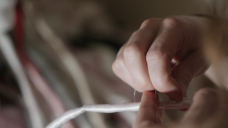
 RawMTS.png1920 x 1080 - 2M
RawMTS.png1920 x 1080 - 2M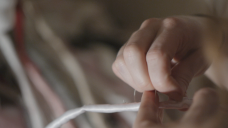
 5DtoRGB.png1920 x 1080 - 2M
5DtoRGB.png1920 x 1080 - 2M -
@onionbrain If you can convert 24p to 25p without having the sound and footage speed up then i am a real primitive dude because i don't know how to do this..lol But i don't think you were talking about this when you commented but more about using 5dtorgb. Please send me a link on how to use 25p mts from gh2 in premiere pro to have real 25p without using clipwrap or 5dtorgb i'll apreciate it.
@YOSS this is exactly what i do right interpret footage as 25p but you will still get your sound speep up by a semi tone.
-
Did a quick 5DtoRGB comparison. Thoughts?
Driftwood Mysterion firmware, 24p, Canon FD 100mm Macro F4 lens. Rendered with Sony Movie Studio 10 HD, Main Concept MPEG4, 50Mbps avg, 135Mbps max. Same settings used on both sets of footage for the "graded" clips.
After playing with the gamma and gain settings on the native clip I think you could precisely reproduce the "gamma 1.8" effect of running the clip through 5DtoRGB if you set Gain ~0.875 and Gamma ~1.3.

 raw.png1920 x 1080 - 2M
raw.png1920 x 1080 - 2M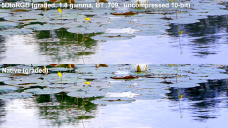
 graded.png1920 x 1080 - 3M
graded.png1920 x 1080 - 3M -
@terry2 Yep we probably should. However if you are transcoding GOP1 files into another Intra format and your file is smaller then yep, you're most probably losing something. Its quite simple to test really, just do some brutal processing on the native file and exactly the same processing on the transcoded version and compare the results. Most Intra codecs have I-Frames that are a little bit smaller than driftwoods GOP1s, and they also are mostly for 4:2:2 source too (which mitigates things a fair bit). That is of course if you can read the native files with whatever application that you're using. Transcoding 4:2:0 footage to 4:4:4 with 5DtoRGB I reckon would cause more harm than benefit. Seriously, try some footage that has some banding and see what happens to it, thats the best way to test any sort of space upsampling. Anyway, I guess your application pushes your raw MTS footage into a 4:4:4 or linear space anyway, as most do these days. But if you're hooked into a transcoding workflow and you can use Neoscene, I'd go with the cineform product.
-
anyone having problems with hbr looking horrible in premiere, try reversing the field dominance under field options, worked for me and looks pretty damn good now
-
@Stray On Mac, I use 5dtorgb or Neoscene to cineform 422. 5dtorgb only for 4444 prores. Otherwise Clipwrap. On NeoScene, there is a lower bitrate on the final file, that leads me to think to a further recompression. But I thought this was the PATCH topic... Shouldn't we stick to the theme?
-
Perfect! Because I'm very happy with the result FCPX. I think the files are imported very well. Just an example with 66 Cbrandin :
-
@shian Yes, there are older comparisons, it's in one of the earlier closed thead segements of this topic.
Again, it showed Sedna A on top. -
@Kihlian Yes, it's 24H. I just updated this info.
Thanks all!
-
@onionbrain even when selected the mpeg2, when setting the settings to high, it will render to a .m2t file.
But i am with you, even i didn't like mpeg2, thats why i am surprised with the results, when the codec is set correct.
Attached a screenshot from vlc player with the orginal mts file, and the m2t file
I render in sony vegas...
M2T file info
Bitrate-modus : Variabel
Bitrate : 15,5 Mbps
Maximale bitrate : 15,8 Mbps
Breedte : 1 280 pixels
Hoogte : 720 pixels
Beeldverhouding : 16:9
Framerate : 50,000 fps
ColorSpace : YUV
ChromaSubsampling : 4:2:0
BitDepth/String : 8 bits
Scansoort : Progressief
MTS file info
Bitrate-modus : Variabel
Bitrate : 58,9 Mbps
Maximale bitrate : 94,2 Mbps
Breedte : 1 280 pixels
Hoogte : 720 pixels
Beeldverhouding : 16:9
Framerate : 50,000 fps
ColorSpace : YUV
ChromaSubsampling : 4:2:0
BitDepth/String : 8 bits
Scansoort : ProgressiefYou can see the bitrate is way lower then the mts file, but the quality is practicly the same.
Maby @driftwood can say something about this?
 m2t-00001.png1280 x 720 - 2M
m2t-00001.png1280 x 720 - 2M
 mts-00001.png1280 x 720 - 2M
mts-00001.png1280 x 720 - 2M -
@From_Paris If there is no reason to use it, if you can read/work with the files natively, then don't use 5DtoRGB it gives no benefits.
-
Some people are speaking highly of the grading capabilities with Sedna. You may want to give it a whirl with your colorGHear.
I'm an amateur when it comes to grading (must remember to re-watch some of your excellent tuts on the subject), but from my limited testing on a very mediocre system I'm inclined to agree.
I know you're busy with work, but keep the tuts coming!
All the best Sam
-
So, with FCPX it's better to use 5DtoRGB?
I recently read that it was not necessary to use with 5DtoRGB FCPX!
-
Where is Vitaly? Did he need a time out after the shock of "The Big Thing"? Hey Vitaly are you there?
-
@proaudio4 thanks for that comparison. I'm still using old Ptools and Quantum 9b. Are there any comparisons with the older settings like 9b. I've noticed a drop in data rate on the newer patches, are they really better in any way other than spanning on more cards?
-
@proaudio Thx for the comparison, you test the 24H...?
-
I agree with @onionbrain, I have used 5DtoRGB more than a fair bit, I used it because I was looking for a quick alternative to getting my footage into Nuke (without going through my normal approach of taking a sequence of TIFF files out of Premiere). It definitely is not upsampling in anything approaching a useful way. In fact I found it to be a destructive process with very high bitrate footage. Once I had built a script in Nuke and then taken in a TIFF sequence to replace the mov file I got from 5DtoRGB the difference in quality was more than noticeable (dramatic in some cases, and not in a good way). I tried it many, many times, it would have been very useful to me. Albeit I only tried with with the DNxHD codecs, no point me trying Prores as I'm on a PC but I can't imagine it would be that (or any) different.
I think the easiest way to see what damage 5DtoRGB can do is to see what effect it has on any shot with any kind of posterisation (banding), it will always look much worse coming out of 5DtoRGB than the native file (hence my claim that its not upsampling in any useful way). I found that an ffmpeg script that just rewrapped the footage in a quicktime DNxHD YUV format was a lot less destructive. Still, I'm back to TIFF exports, framecycler, big caches, and DJView and whatever I shoot maintains its quality. Also as onionbrain says, everything it does you can do in your NLE anyhow (if you'ld ever need to start with a 1.8 gamma, god knows why you would want to convert to that anyway).
-
@onionbrain I agree - with Premiere there is no reason to use 5DtoRGB. I could not see any difference between the raw mts files and the converted ProRes444 in AE. There's no discernable difference, and they grade equally well. BUT if you are not using Premiere. The 5DtoRGB conversions are stellar! 422HQ is flatter than 4444, but the 4444 is sharper and has better detail. BOTH are superior to transcodes done with ANY version of FCP, including X.
-
Respectfully, you're either reading their marketing materials or hopeful bloggers. It's entirely possible "5DtoRGB" did something useful for the old Final Cut -- I haven't touched the old FCP in over five years and I don't know.
For Premiere -- the absolute kindest characterization I can come up with is "hoax." Re-assigning values is different from up-sampling -- and it's not up-sampling. Again, everything it does can be done in seconds with the RGB Color Corrector in Premiere. Furthermore, almost any transcoding process has some element of destructiveness to it -- and this is especially cruel when you're dealing with footage as nice as you're getting with a Driftwood patch from the GH2. Additionally, the true benefit that most unsuspecting users are reporting relates to dynamic range -- and that can also be accomplished in two seconds or less with a levels adjustment.
For people who love "5DtoRGB" -- great -- do your thing. But for those who are truly looking for a meaningful workflow -- I'm telling you -- it's a hoax. Spend your money on something useful like Neat Video and learn how magnificent this Driftwood footage is when you do a curves/levels adjustment or use the RGB Color Corrector in Premiere (it's almost like a reversed Technicolor Cinestyle). Yes, you can pull two or more stops of usable detail out of midtones and shadows.
@mozes I've had some outstanding results in the past up-scaling 720/60p to 1080 in Premiere. I expected it to be awful or mediocre at best -- and it was outstanding.
I'm just troubled by the mpeg-2 thing -- I'm at the point where I can simply look at a video and tell the difference between mpeg-2 and mpeg-4.
-
@onionbrain yhea i now, but the results are better then expected.
If you render to blueray, and not DVD or Svcd!!
I film in 720p 50fps, and most off the time i upscale it to 1080, it looks then still better then HBR.
Bitrate-modus : Variabel Bitrate : 15,4 Mbps Maximale bitrate : 15,8 Mbps Breedte : 1 920 pixels Hoogte : 1 080 pixels Beeldverhouding : 16:9 Framerate : 25,000 fps ColorSpace : YUV ChromaSubsampling : 4:2:2 BitDepth/String : 8 bits Scansoort : Progressief
By the way, i have set it now to the exact same i,p and b frames as the way the gh2 encoded it.
To my feeling, is mp4 a little darker when its rendered and online on a video website.
But i have to set the ChromaSubsampling correct, its wrong now i just see, just over looked i think... -
Here's a test that shows the difference in image detail with sharpening cranked in post. This test shows how poorly the stock firmware can repesent finer detail (larger macroblocks). This also shows that Mysteron (original not burst) is close to Sedna A AQ1, but falls just a tad short in detail.
The test was done in controlled indoor lighting 5K (color temp)
24H
ISO 160
5K WB set in camera
Smooth (all -2 settings)
160 SS
2 Stops Under exposed
14-140MM Lens @ 33MM
Fucked up the framing for stock, but it's close.
Stock GH2 v1.0 (never hacked) (17Mbps)
Mysteron (Standard) (117Mbps)
Sedna A AQ1 (143Mbps)
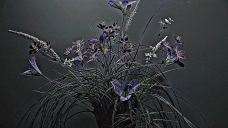
 Stock Firmware.png1920 x 1080 - 4M
Stock Firmware.png1920 x 1080 - 4M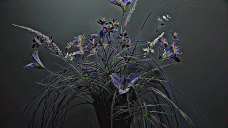
 Mysteron.png1920 x 1080 - 5M
Mysteron.png1920 x 1080 - 5M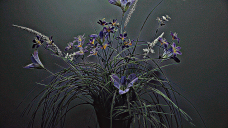
 Sedna A AQ1.png1920 x 1080 - 5M
Sedna A AQ1.png1920 x 1080 - 5M
Howdy, Stranger!
It looks like you're new here. If you want to get involved, click one of these buttons!
Categories
- Topics List23,970
- Blog5,724
- General and News1,346
- Hacks and Patches1,153
- ↳ Top Settings33
- ↳ Beginners255
- ↳ Archives402
- ↳ Hacks News and Development56
- Cameras2,360
- ↳ Panasonic990
- ↳ Canon118
- ↳ Sony155
- ↳ Nikon96
- ↳ Pentax and Samsung70
- ↳ Olympus and Fujifilm100
- ↳ Compacts and Camcorders300
- ↳ Smartphones for video97
- ↳ Pro Video Cameras191
- ↳ BlackMagic and other raw cameras117
- Skill1,961
- ↳ Business and distribution66
- ↳ Preparation, scripts and legal38
- ↳ Art149
- ↳ Import, Convert, Exporting291
- ↳ Editors191
- ↳ Effects and stunts115
- ↳ Color grading197
- ↳ Sound and Music280
- ↳ Lighting96
- ↳ Software and storage tips267
- Gear5,414
- ↳ Filters, Adapters, Matte boxes344
- ↳ Lenses1,579
- ↳ Follow focus and gears93
- ↳ Sound498
- ↳ Lighting gear314
- ↳ Camera movement230
- ↳ Gimbals and copters302
- ↳ Rigs and related stuff272
- ↳ Power solutions83
- ↳ Monitors and viewfinders339
- ↳ Tripods and fluid heads139
- ↳ Storage286
- ↳ Computers and studio gear560
- ↳ VR and 3D248
- Showcase1,859
- Marketplace2,834
- Offtopic1,319










